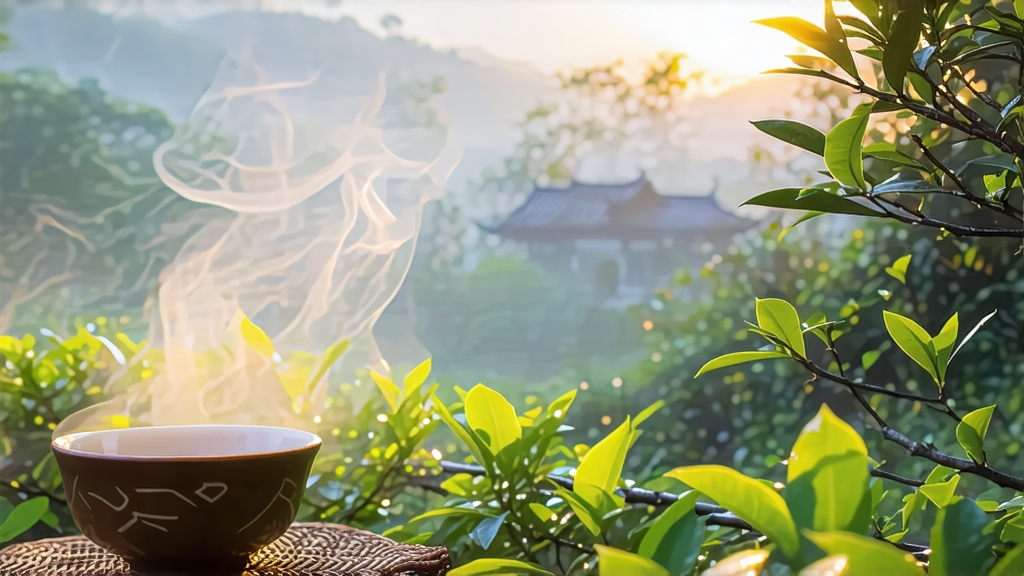
Alishan High-Mountain Oolong is not merely a tea; it is a liquid map of Taiwan’s central spine, a drink that carries the chill of 1,200-metre dawns, the perfume of indigenous orchids, and the patience of charcoal masters who learned their art from Japanese tea officers a century ago. To understand this cultivar—often labeled “Alishan Qing Xiang Oolong”—is to follow a path that begins in Qing-era Fujian, detours through colonial railways, climbs into perpetual cloud cover, and ends in a gaiwan whose lid you lift with the reverence of opening a small treasure chest.
History: From Anxi to Alishan
The tea’s genetic ancestor is the soft-stemmed Qing Xin (or “Green Heart”) cultivar brought from Anxi County to Taiwan during the great 19th-century migration. When the Japanese established the Alishan Forest Railway in 1912 to harvest cypress, they also surveyed the slopes for cash crops. Tea planters discovered that the same diurnal temperature swing that produced tight-grained cypress also coaxed tea bushes to hoard amino acids and fragrant esters. After 1949, retreating Kuomintang soldiers turned military dependents’ villages into tea hamlets, refining Fujian’s traditional oolong protocol into a brighter, greener, more alpine style. By 1985 Alishan was synonymous with “high-mountain oolong,” a category that now commands auction prices rivaling top Darjeeling.
Terroir: Where Clouds Replace Soil
Alishan’s classic gardens sit between 1,000 and 1,400 m in Chiayi County. At these altitudes the atmospheric pressure drops 10 %, slowing leaf growth and thickening cell walls. Morning fog filters UV-B light, forcing the plant to synthesize more theanine and fewer bitter catechins. The soil is a friable laterite rich in iron and magnesium, drained by bamboo groves that prevent root rot. Night temperatures can plunge to 8 °C even in July; the stress concentrates monoterpene alcohols responsible for the cultivar’s signature “milky orchid” note. In short, the mountain does half the withering before the farmer even touches the leaf.
Plucking: The One-Heart-Two-Leaves Canon
Pickers start at 5 a.m. when dew still weighs down the standard, a tender triad of unopened bud plus two semi-mature leaves. Only shoots that have turned from jade to a yellowish “fish-leaf” hue are taken; this ensures the ideal 3:2 ratio of polyphenols to soluble sugars. A top worker harvests barely four kilograms of fresh leaf in a day—just enough after processing for 600 g of finished tea.
Outdoor Withering: Dancing in the Breeze
The leaves are spread on bamboo trays set in shaded courtyards where the mountain wind blows at 5–7 km/h. Every twenty minutes they are “fluffed” by hand, a motion like turning pillows so that each edge contacts dry air. During this two-hour ballet moisture drops from 78 % to 68 %, and grassy hexenal volatiles evaporate, making room for floral linalool.
Indoor Withering & Oxidation: The Scent of Green Apples
Trays move into a climate-controlled room at 22 °C and 65 % humidity. Here the leaf is gently tossed in tumbling machines whose drums are lined with hemp cloth to prevent bruising. Oxidation proceeds slowly—never above 25 %—so the leaf margin turns chestnut while the vein stays emerald. A master sniffs every batch, waiting for the moment when crushed leaves smell like green apples dipped in honey; that is the signal to kill-green.
Kill-Green: Arresting Time
A drum roaster heated to 260 °C receives the leaves for exactly 90 seconds. The goal is not full denaturation but a “partial cook” that locks in the light oxidation. The leaves emerge glossy, limp, and fragrant like warm spinach tossed with butter.
Rolling & Balling: The Birth of the Jade Pearl
While still at 50 °C the leaves are wrapped in cotton cloth and rolled under mechanical pressure into tight hemispheres. This repeated bundling and unbundling—up to 60 cycles—fractures cell walls so that aromatic oils migrate to the surface. The final granules resemble tiny dragon eyes,